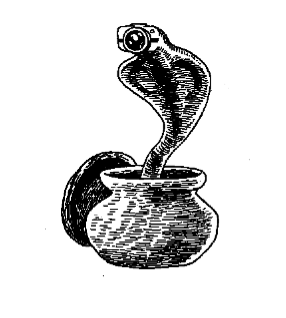It still happens that before shipping off to India, you are prescribed one of V. S. Naipaul’s subcontinental travel tomes, several hundred pages of sonorous insights meant to be taken along with your bitter, nightmare-inducing anti-malarials. Together with Rushdie’s Indo-Pak partition epic Midnight’s Children, Naipaul’s India books constitute the heavier half of a well-established literary travel regimen.
But, as the newsweeklies keep telling us, India is changing. And Naipaul is aging, his cash value in celebrity death pools diving each time he lives to see a new printing of his 1977 classic, India: A Wounded Civilization. As Naipaul gently fades, so does his India. The Laureate’s India—An Area of Darkness, he first called it, in a 1964 title—is an exhausting expanse populated by soot-caked street urchins, publicly defecating street sweepers, dysfunctional puke-green rotary phones, Kafka-meets-Krishna bureaucracy, and a few insecure middle-class matrons. The country of his ancestors appears as you’d expect it to appear based on his notorious mid-life conclusion that India is just a particularly colorful part of the “Turd World”—“the world’s largest slum” populated by “a withered race of men.”
This stinking, maddening place still exists. It practically slaps you in the face the moment you hit the tarmac at Chattrapathi Shivaji International in Mumbai. But this India is lately feeling the cool of shadows cast by the glass skyscrapers and high-tech exurbs sprouting like pop-up-book pictures around the country. You’ve heard about the call centers and the two-generations-ahead software centers, but consider this: In the gleaming condo and mall enclave of Gurgaon, an outsourcing boomtown just outside Delhi, call center employees have settled in enough numbers so that a sizable chunk of the city actually operates on the same time zone as New York City.
Naipaul’s socialist India of the ’60s and ’70s—its soft alliance with the Soviet Union frozen in his pages—has become America’s new best capitalist friend, symbolized by Gurgaon’s fully globalized hard-partying Hindu middle class, “India’s first Me Generation” according to one recent magazine cover. This India is well past the novelty of an imported Benz blasting past oxcarts, two-stroke rickshaws, and severely overloaded, psychedelically painted Nehru-era diesel trucks. This is a land of Lamborghinis now; the first Gallardos will be arriving in Bangalore this year. The latest Forbes count tells us that the subcontinent now has the fastest growth rate for billionaires anywhere outside of the U.S. In this 500-horsepower place, Naipaul’s masterful meditations on woe and wounds and the weight of history can all sound very last-century, if they are heard at all.
The books now thrust upon a traveler to India reflect this change. There’s William Dalrymple’s literary journalism anthology, The...
You have reached your article limit
Sign up for a digital subscription and continue reading all new issues, plus our entire archives, for just $1.50/month.
Already a subscriber? Sign in





